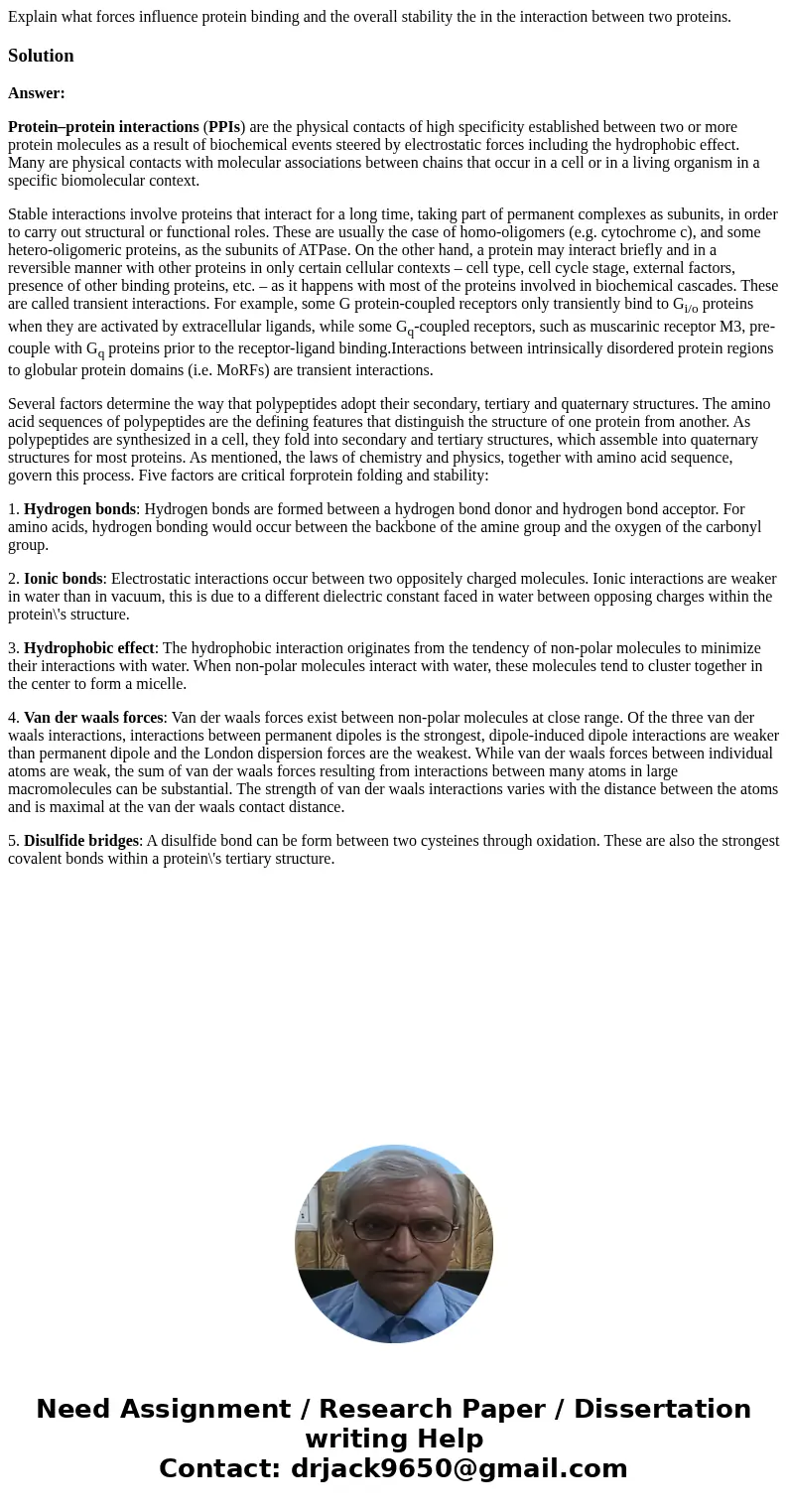Explain what forces influence protein binding and the overal
Explain what forces influence protein binding and the overall stability the in the interaction between two proteins.
Solution
Answer:
Protein–protein interactions (PPIs) are the physical contacts of high specificity established between two or more protein molecules as a result of biochemical events steered by electrostatic forces including the hydrophobic effect. Many are physical contacts with molecular associations between chains that occur in a cell or in a living organism in a specific biomolecular context.
Stable interactions involve proteins that interact for a long time, taking part of permanent complexes as subunits, in order to carry out structural or functional roles. These are usually the case of homo-oligomers (e.g. cytochrome c), and some hetero-oligomeric proteins, as the subunits of ATPase. On the other hand, a protein may interact briefly and in a reversible manner with other proteins in only certain cellular contexts – cell type, cell cycle stage, external factors, presence of other binding proteins, etc. – as it happens with most of the proteins involved in biochemical cascades. These are called transient interactions. For example, some G protein-coupled receptors only transiently bind to Gi/o proteins when they are activated by extracellular ligands, while some Gq-coupled receptors, such as muscarinic receptor M3, pre-couple with Gq proteins prior to the receptor-ligand binding.Interactions between intrinsically disordered protein regions to globular protein domains (i.e. MoRFs) are transient interactions.
Several factors determine the way that polypeptides adopt their secondary, tertiary and quaternary structures. The amino acid sequences of polypeptides are the defining features that distinguish the structure of one protein from another. As polypeptides are synthesized in a cell, they fold into secondary and tertiary structures, which assemble into quaternary structures for most proteins. As mentioned, the laws of chemistry and physics, together with amino acid sequence, govern this process. Five factors are critical forprotein folding and stability:
1. Hydrogen bonds: Hydrogen bonds are formed between a hydrogen bond donor and hydrogen bond acceptor. For amino acids, hydrogen bonding would occur between the backbone of the amine group and the oxygen of the carbonyl group.
2. Ionic bonds: Electrostatic interactions occur between two oppositely charged molecules. Ionic interactions are weaker in water than in vacuum, this is due to a different dielectric constant faced in water between opposing charges within the protein\'s structure.
3. Hydrophobic effect: The hydrophobic interaction originates from the tendency of non-polar molecules to minimize their interactions with water. When non-polar molecules interact with water, these molecules tend to cluster together in the center to form a micelle.
4. Van der waals forces: Van der waals forces exist between non-polar molecules at close range. Of the three van der waals interactions, interactions between permanent dipoles is the strongest, dipole-induced dipole interactions are weaker than permanent dipole and the London dispersion forces are the weakest. While van der waals forces between individual atoms are weak, the sum of van der waals forces resulting from interactions between many atoms in large macromolecules can be substantial. The strength of van der waals interactions varies with the distance between the atoms and is maximal at the van der waals contact distance.
5. Disulfide bridges: A disulfide bond can be form between two cysteines through oxidation. These are also the strongest covalent bonds within a protein\'s tertiary structure.

 Homework Sourse
Homework Sourse